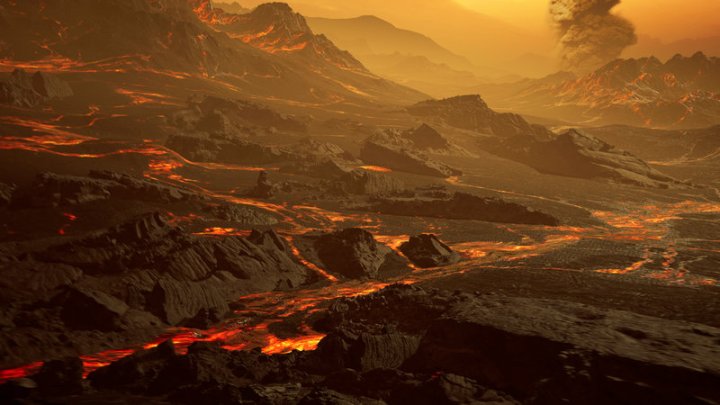
No day or night, heat intense enough to melt lead, and glowing rivers of lava: This hellish landscape is a typical day on Gliese 486b, a recently discovered exoplanet orbiting the nearby star Gliese 486. The planet is rocky and around three times the mass of Earth, making it a type called a super-Earth. But it is so hot that the conditions there are quite different from what we’re used to.
The planet is so close to its star that a year there lasts only 1.5 Earth days. Though the star is fainter and cooler than our sun, the planet orbits just 1.5 million miles away and it is tidally locked, meaning one side of the planet always faces the star. This drives temperatures up even higher, reaching a surface temperature of 700 Kelvin (800 degrees Fahrenheit).
The researchers who made the discovery believe this means the planet would appear more like Venus than like Earth, with a hot and dry landscape and rivers of glowing lava. There is probably little atmosphere there, as the heat from the star would act to evaporate it away, but the planet’s gravity likely helps it to retain some atmosphere.
The potential existence of a thin but present atmosphere makes this planet an excellent candidate for research as it allows scientists to test their theories on atmospheric models for rocky planets. “The discovery of Gliese 486b was a stroke of luck,” said José A. Caballero of the Centro de Astrobiología in Spain, co-author of the paper, in a statement. “A hundred degrees hotter and the planet’s entire surface would be lava. Its atmosphere would consist of vaporized rocks. On the other hand, if Gliese 486b were a hundred degrees colder, it would have been unsuitable for follow-up observations.”
The researchers now want to use upcoming next-generation telescopes to study the planet further and to try to peer into its atmosphere to see its composition. “The proximity of this exoplanet is exciting because it will be possible to study it in more detail with powerful telescopes such as the upcoming James Webb Space Telescope and the future Extremely Large Telescopes,” said lead author Trifon Trifonov of the Max Planck Institute for Astronomy.
“We can hardly wait for the new telescopes to become available. The results will help us to understand how well rocky planets can hold their atmospheres, what they are made of, and how they influence the energy distribution on the planets.”



